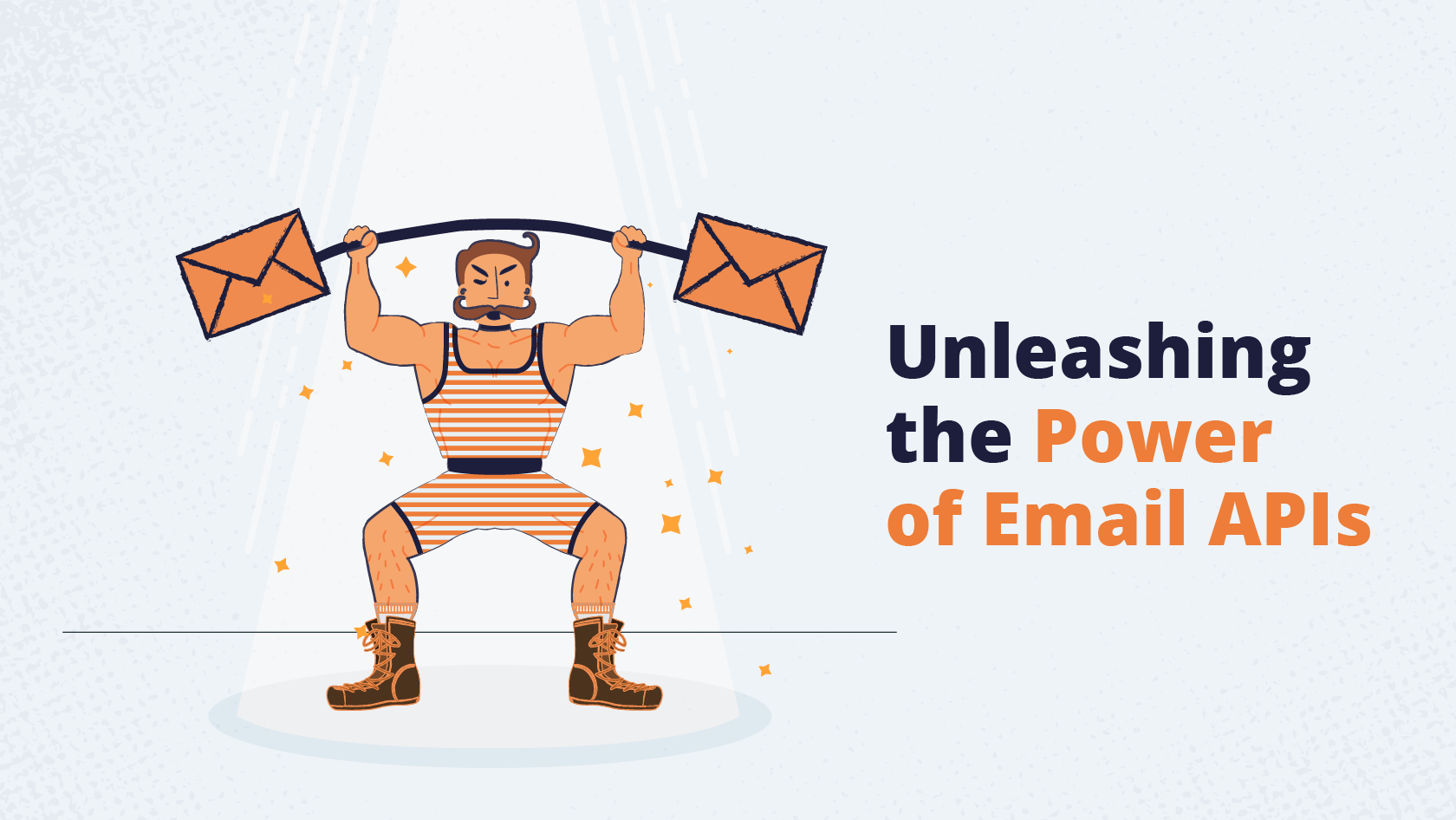
How many of us heard this term before: Application Programming Interfaces (APIs)? Email folks, we know you have. If you’re newer to the game, APIs can be super confusing. What do they do? How do I get one? Who’s on first?
In the tiniest of tiny nutshells, email APIs are a way to communicate, be it to customers, users, or prospects.
Here are the things we can’t fit into that little acorn above.
Understanding Email APIs
An email API serves as the gateway for developers to tap into the features and functionalities offered by email service providers (ESPs) like SocketLabs. They provide developers easy access to doing all the things listed below. As you can see, they’re super versatile and can be the key to both better efficiency and greater performance.
- Send transactional emails: Whether password resets, shipping notifications, or receipts, email APIs allow developers to send time-critical transactional emails in a very simple manner.
- Receive real-time engagement notifications: Otherwise known as webhooks, you can receive instant notifications about recipient engagement to tackle whatever action is required next.
- Enable inbound email processing: Email APIs creates a seamless integration of inbound email processing into other applications to make email systems a little easier to make and use.
- Access statistics and insights: An email API provides valuable data and insights about email performance, allowing developers to monitor and optimize their email campaigns effectively.
- Perform email marketing tasks: Manage mailing lists, create targeted campaigns, and track the effectiveness of email marketing programs without breaking a sweat because the email API plugged in everything you need to do so.
Sending Email from a Web Application
While many platforms rely on Simple Mail Transfer Protocol (SMTP) for sending emails, there are instances where developers require additional capabilities to meet their specific needs. Email APIs can play a pivotal role here. They provide programmatic access to basic email sending and advanced functionalities beyond the limitations of traditional protocols like SMTP.
Use Cases for Email APIs
Email APIs are particularly suited for sending notifications and transactional emails in a variety of use cases. Common examples include:
- Password reset emails: Providing a way for users to reset their passwords securely.
- Error messages: Sending real-time alerts about errors or issues encountered within an application.
- Shipping notifications: Informing customers about the status of their orders and providing shipment details.
- Receipts and order confirmations: Sending automated confirmations to customers upon successful purchases.
- Account creation and welcome messages: Welcoming new users and guiding them through the onboarding process.
- Password verification emails: Ensuring the security and integrity of user accounts through password verification processes.
- Event-based notifications: Communicating reminders, updates, and notifications related to specific events or actions.
By using an email API, businesses can count on the timely delivery of critical notifications customers expect, enhancing the overall user experience and fostering stronger engagement. Selecting a reputable email platform like SocketLabs is a smart move for achieving optimal deliverability and maintaining a positive sender reputation. We’re not biased, though, please remember that.
Advantages of Email APIs
Email APIs aren’t just for action-based decisions. No. Instead, there are several overall benefits to using APIs.
- Speed and efficiency: Email APIs provide the fastest and most efficient way to send emails, eliminating the complexities and delays associated with often associated with sending via SMTP.
- Advanced analytics: APIs offer developers granular insights into email performance, letting them capture detailed statistics, track open rates, click-through and bounce rates, and optimize email campaigns as needed.
- Enhanced security: Unlike SMTP, email APIs use keys to provide an extra layer of security. By generating authenticated credentials separate from account login details, the risks of unauthorized access and spam-related issues are significantly reduced, safeguarding both the sender’s reputation and recipient privacy.
Sending Email with SocketLabs’ Injection API
In the way, way back…like a few years ago, sending emails involved complex processes including the management of physical servers and technical expertise. However, cloud email delivery services (we have those) revolutionized this landscape. SocketLabs’ Injection API eliminates the need for building and maintaining infrastructure, creating an easy-peasy way for developers to integrate their code into an existing and reliable ESP. That’s us.
SocketLabs’ Injection API was designed with developer-friendliness in mind, so it offers a range of flexible libraries for popular programming languages like .NET, PHP, Node.js, Java, Python, and more. Just copy the appropriate library and integrate it into your codebase. Boom.
Conclusion
Email APIs are really great and can be a very powerful way to make email easier and more effective. They’re scalable, they can. bring more robust or easier-to-use interfaces to you or, if you’re a more complex sender with multiple subaccounts, your own senders. The SocketLabs Injection API is really cool and highly regarded, so if you’re considering using an API, switching to another provider and using their API, or just want to experience the joy that is SocketLabs, you can start right this minute with a free trial.







